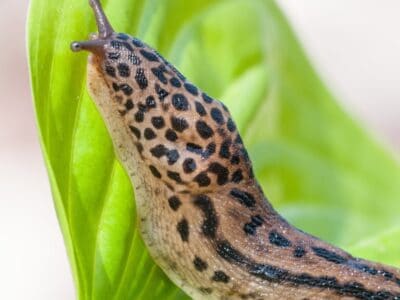Yellow Belly Ball Python
Python regius
The yellow belly gene is co-dominant and doesn't completely override other genes.
Advertisement
Yellow Belly Ball Python Scientific Classification
- Kingdom
- Animalia
- Phylum
- Chordata
- Class
- Reptilia
- Order
- Squamata
- Family
- Pythonidae
- Genus
- Python
- Scientific Name
- Python regius
Read our Complete Guide to Classification of Animals.
Yellow Belly Ball Python Conservation Status
Yellow Belly Ball Python Facts
- Prey
- Rats, mice, nestling birds
- Main Prey
- Rats and mice
- Name Of Young
- Hatchling, snakelet
- Group Behavior
- Solitary except during mating season
- Fun Fact
- The yellow belly gene is co-dominant and doesn't completely override other genes.
- Biggest Threat
- Wild pythons face poaching for meat, leather.
- Most Distinctive Feature
- Checkered pattern on the sides of its belly
- Gestation Period
- 60-80 days
- Diet
- Omnivore
- Lifestyle
- Nocturnal
- Favorite Food
- Rats, mice
Yellow Belly Ball Python Physical Characteristics
- Color
- Brown
- Yellow
- Fawn
- Black
- White
- Tan
- Albino
- Dark Brown
- Cream
- Orange
- Chocolate
- Skin Type
- Scales
- Lifespan
- 20-30 years
- Weight
- Up to 7 pounds
- Length
- 4-6 feet
- Age of Sexual Maturity
- 2-4 years
- Venomous
- No
- Aggression
- Low
View all of the Yellow Belly Ball Python images!
“Yellow belly ball pythons started as an ‘odd-looking’ normal ball python that Amir Soleymani purchased at a reptile show in 1997.“
Yellow Belly Ball Python Summary
Over three million ball pythons have been exported from Africa since the 1970s. Many more are bred in captivity every year, making them one of the most popular pet snake species. They’re easy to care for, and the hundreds of morphs available mean that you can get unique, one-of-a-kind ball pythons.
Incredible Yellow Belly Ball Python Facts
- They are commonly mixed with other genes to bring out desired characteristics.
- Yellow belly ball pythons usually have a cleaner belly, with a checkered pattern on the belly edges and no speckling in the middle.
- Within two years of purchasing that “odd-looking” ball python, Soleymani had proven that the yellow belly trait was genetic.
Yellow Belly Ball Python Habitat and Diet
Wild ball pythons live in forests, open grasslands, and agricultural areas. They’re found in 17 countries in western and central Africa. However, the primary export countries are Ghana, Togo, and Benin. Aside from these, they also inhabit Burkina Faso, Cote d’Ivoire, Central African Republic, DR Congo, Guinea-Bissau, Guinea, Senegal, Sierra Leone, Mali, Niger, Nigeria, Cameroon, Chad, and South Sudan.
These countries are full of grasslands and agricultural areas where ball pythons can slither unnoticed through the underbrush. In their native habitat, they use abandoned burrows and hollow trees to hide while they sleep or digest. In captivity, hiding spaces should be simulated, since they need several hideouts in their enclosures to feel safe.
Yellow Belly Ball Python Morph
This ball python morph doesn’t look very different from a normal ball python at first glance. However, they don’t have the belly speckling of a normal ball python. It sometimes has a yellowish hue and checkered pattern along the edges. This morph also has a flaming pattern between the alien head markings.
The yellow belly genetic trait is an incomplete dominant/co-dominant trait, which means that it doesn’t completely take over the visual appearance of a recessive trait. It frequently creates a blending of characteristics, allowing recessive traits to show through, at least partially.
Several beautiful morphs come from breeding yellow belly ball pythons with other types of pythons; snakes with that gene in their breeding are fairly common. Freeway and ivory morphs are great examples of this. Morph Market’s Morphpedia helps explain the differences between morphs.
Yellow Belly Ball Python Scientific Name and Classification
Yellow belly ball pythons and combinations thereof may sometimes look like completely different species; yet, they are ball pythons. Their scientific name is Python regius, which means royal or kingly python. These snakes are members of the Pythonidae family, along with other pythons.
This species rolls into a ball when they feel threatened, giving them their common name. However, in Europe, they’re often called royal pythons. It’s an allusion to stories of rulers wearing these docile snakes as bracelets. Cleopatra is the source of one, but it’s not clear if she actually did this.
Yellow Belly Ball Python Predators, Threats, Conservation, and Population
Ball pythons have no shortage of predators in the wild. They’re not overly large snakes, so even medium-sized predators may take advantage of them. Big cats, king cobras, mongooses, hyenas, and birds of prey may be among their predators.
In the wild, ball pythons are listed as “Near Threatened” in the IUCN Redlist of Threatened Species. In the main countries of export of Ghana, Benin, and Togo, they are diminishing more rapidly than in other parts of their range. However, in all western areas in Africa their overall numbers are decreasing.
Many factors are contributing to dwindling population, including export for pet trade and habitat changes, which are brought about by agricultural expansion and increased pesticide use. Yet, they also face population reduction due to poaching for leather, meat, and use in traditional medicine.
Yellow belly ball pythons are common in captivity, but there isn’t a census of how many exist. They aren’t likely to go extinct, and many are available as pets.
Yellow Belly Ball Python Appearance
These beautiful snakes are medium-sized, nonvenomous constrictors that grow to 4-6 feet long; males tend to be shorter and thinner than females. These snakes have a muscular body they use to incapacitate their prey by squeezing it into heart failure. Their heads are triangular, and their nose is blunt; along their upper lips are heat-sensitive pits that help them find their warm-blooded prey.
While ball pythons do have a mouth full of sharp teeth, they’re not big enough to do any real damage. They have vertical pupils and stripes on the side of their heads. Pythons are considered “primitive” snakes and have vestigial limbs near their cloaca. In the males, these are more pronounced, somewhat functional, and used during mating.

A baby yellow belly ball python is small enough to hold in one hand.
©SusImage/Shutterstock.com
Yellow Belly Ball Python Behavior
The ball python morph has all the same great personality traits as the normal colored snakes. They are easy to handle, making them good beginner snakes; they’re also tolerant of less-than-ideal habitats. They don’t have the neurologic issues (head wobble, stargazing) of some of the spider morphs.
Although snakes are generally solitary animals, many pet yellow belly ball pythons become comfortable with their human. Some even seem to look forward to interactions with them. As young snakes, they may bite, but they calm down with gentle handling as they grow.
Yellow Belly Ball Python Reproduction, Babies, and Lifespan
Like other ball pythons, they sexually mature typically between two and four years of age. They can be mature (especially the males) a little earlier, but often the females need more time to develop enough body weight to support reproduction. About two months after mating, females lay 3-15 eggs in a secluded space and coil around them until they hatch 50-60 days later.
In captivity, these snakes can live for 20-30 years, and possibly longer with proper care. In the wild, their life expectancy is a bit lower.
Related Animals
View all 32 animals that start with YYellow Belly Ball Python FAQs (Frequently Asked Questions)
Where can you get a yellow belly ball python?
At this point, many variations are available from breeders. You can find yellow bellies in combination with almost any other gene.
Do yellow belly ball pythons make good pets?
Yes, in fact, ball pythons are one of the best beginner snakes. They’re easy-going and relatively tolerant of habitats that aren’t perfect.
What do yellow belly ball pythons eat?
Rats and mice, mostly. Some keepers feed their snakes quail chicks as a treat or to get them to end a hunger strike.
How long can a yellow belly ball python go without food?
You’d be surprised. There are stories of ball pythons that don’t eat for six months at a time. They’re known for being a little bit picky with their food. It’s the one real drawback to owning one. It can be a little scary when the pet snake you love stops eating. Yet, as long as they look healthy and aren’t losing weight, it’s fine.
How do yellow belly ball pythons hunt?
Like most snakes, they’re ambush predators. They’re actually pretty lazy snakes and like to wait for their food.
Thank you for reading! Have some feedback for us? Contact the AZ Animals editorial team.
Sources
- Ball Python Morphs | Terrarium Quest / Accessed August 21, 2022
- Python regius | Reptarium Reptile Database / Accessed August 21, 2022
- D'Cruze, N., Wilms, T., Penner, J., Luiselli, L., Jallow, M., Segniagbeto, G., Niagate, B. & Schmitz, A. 2021. Python regius. The IUCN Red List of Threatened Species 2021: e.T177562A15340592. https://dx.doi.org/10.2305/IUCN.UK.2021-2.RLTS.T177562A15340592.en. Accessed on 20 August 2022. / Published July 16, 2012 / Accessed August 21, 2022
- Yellow Belly | Morphpedia / Accessed August 21, 2022

















